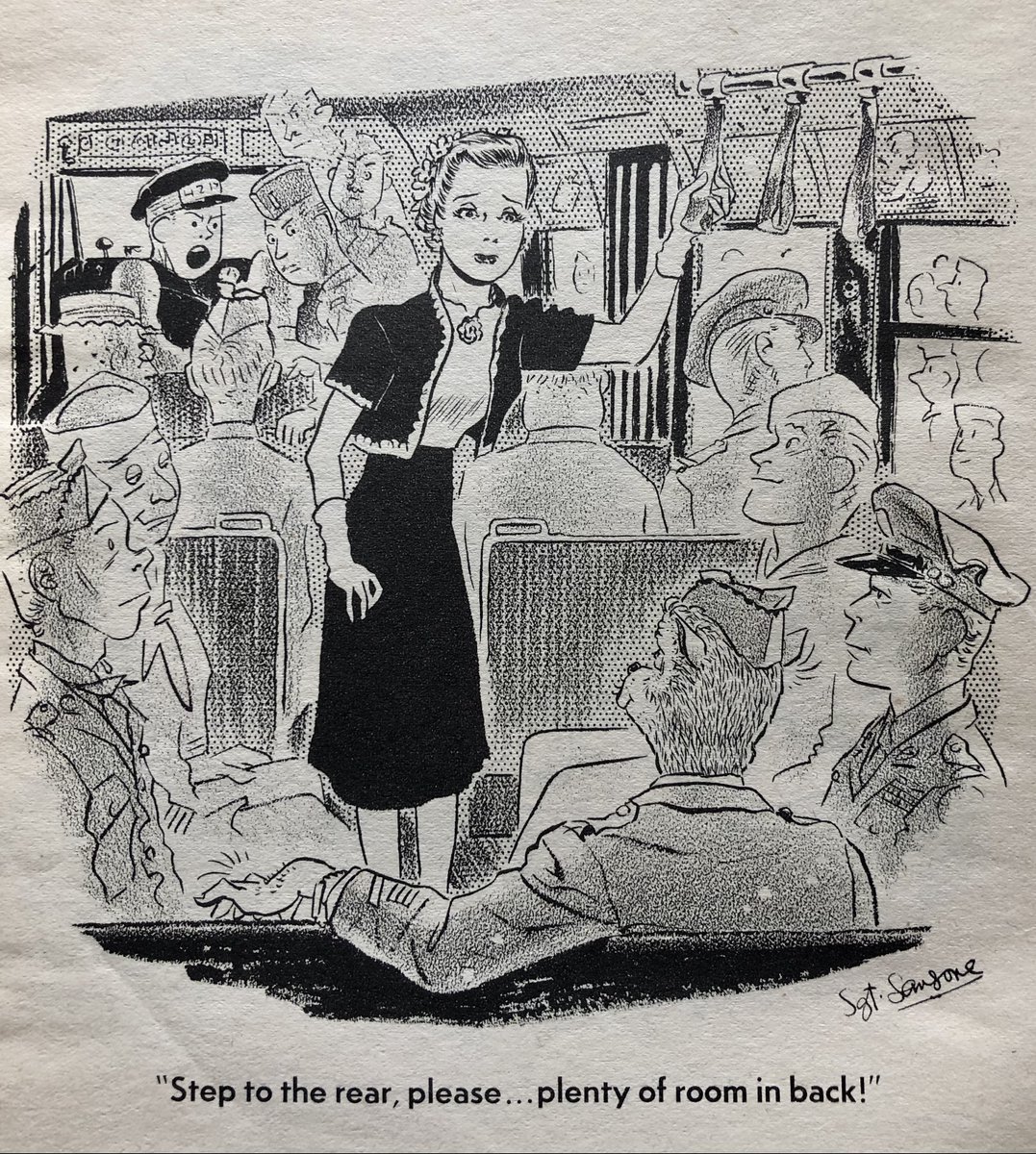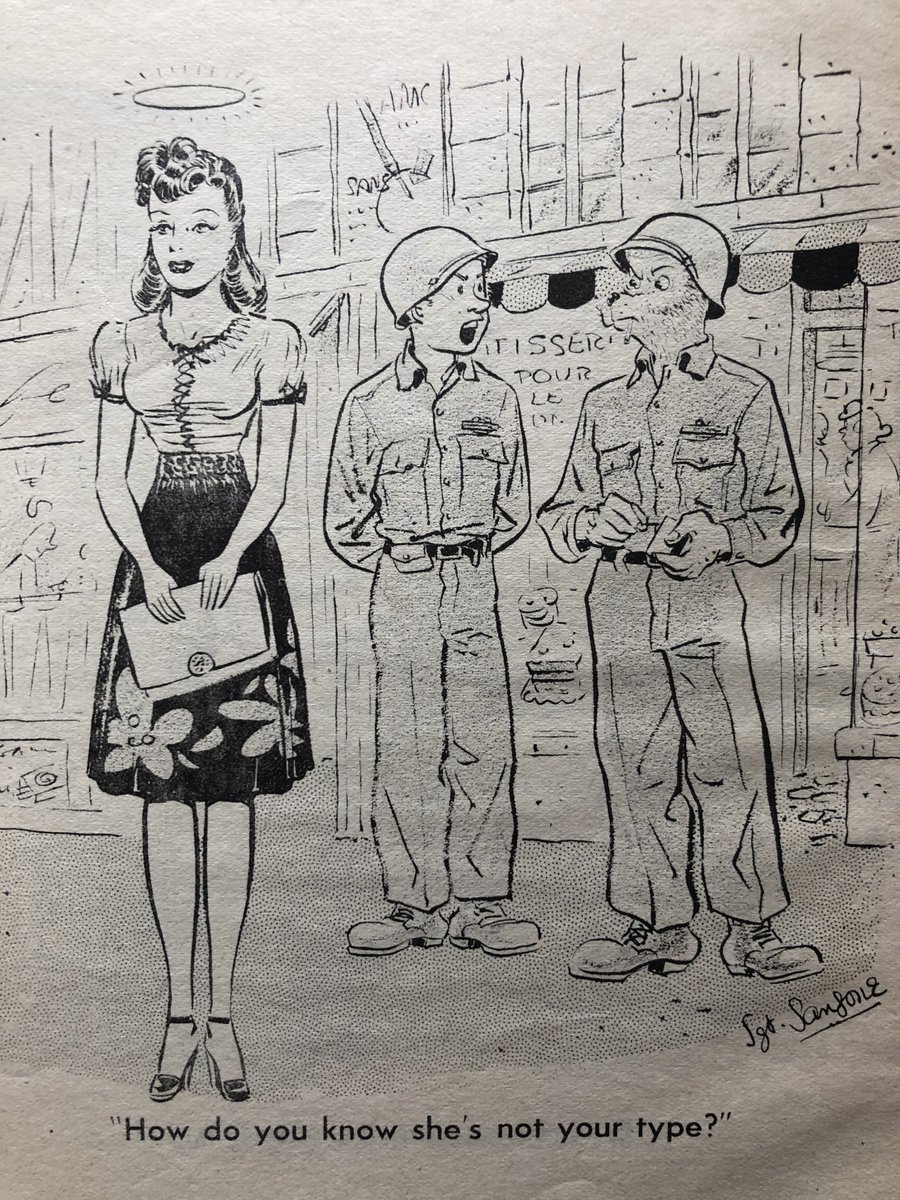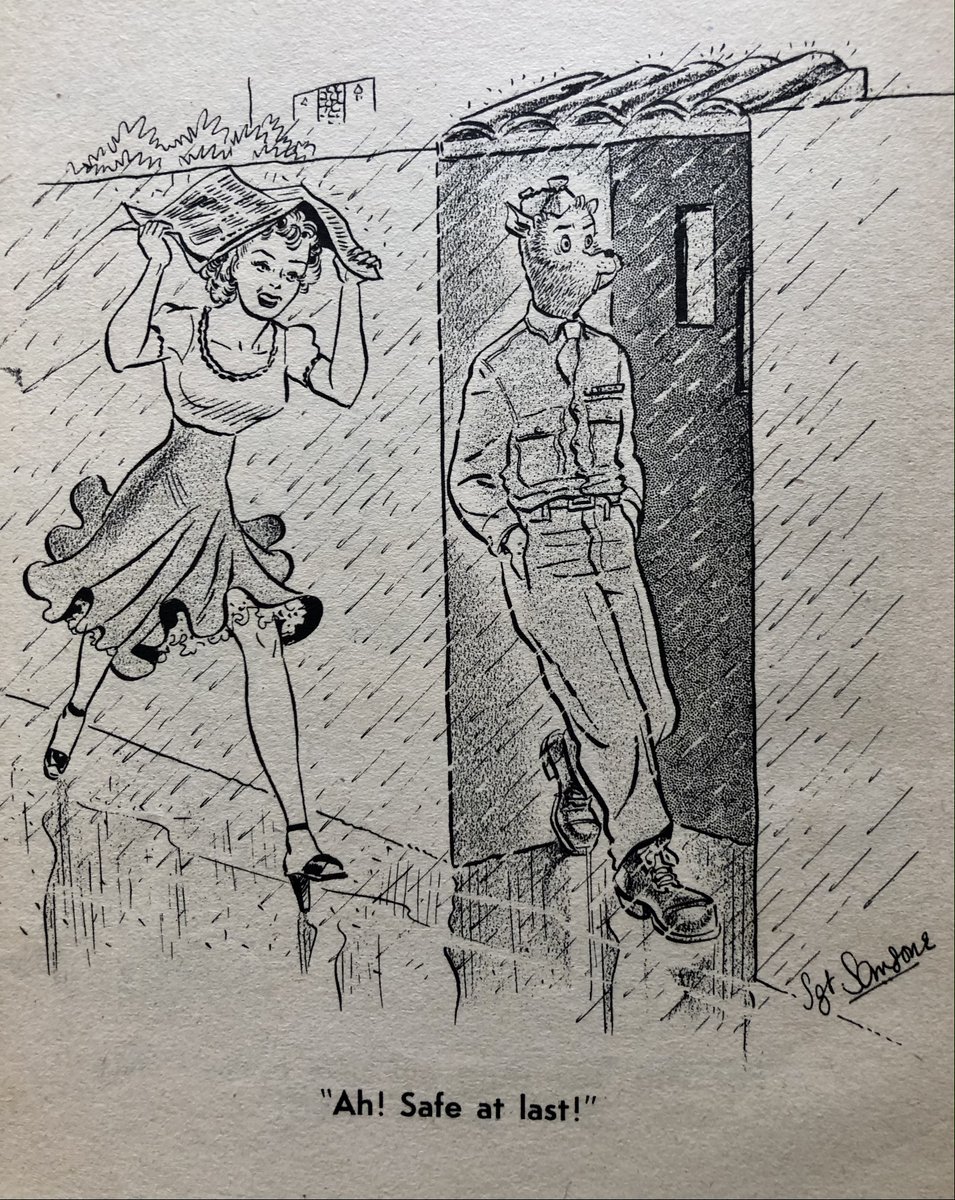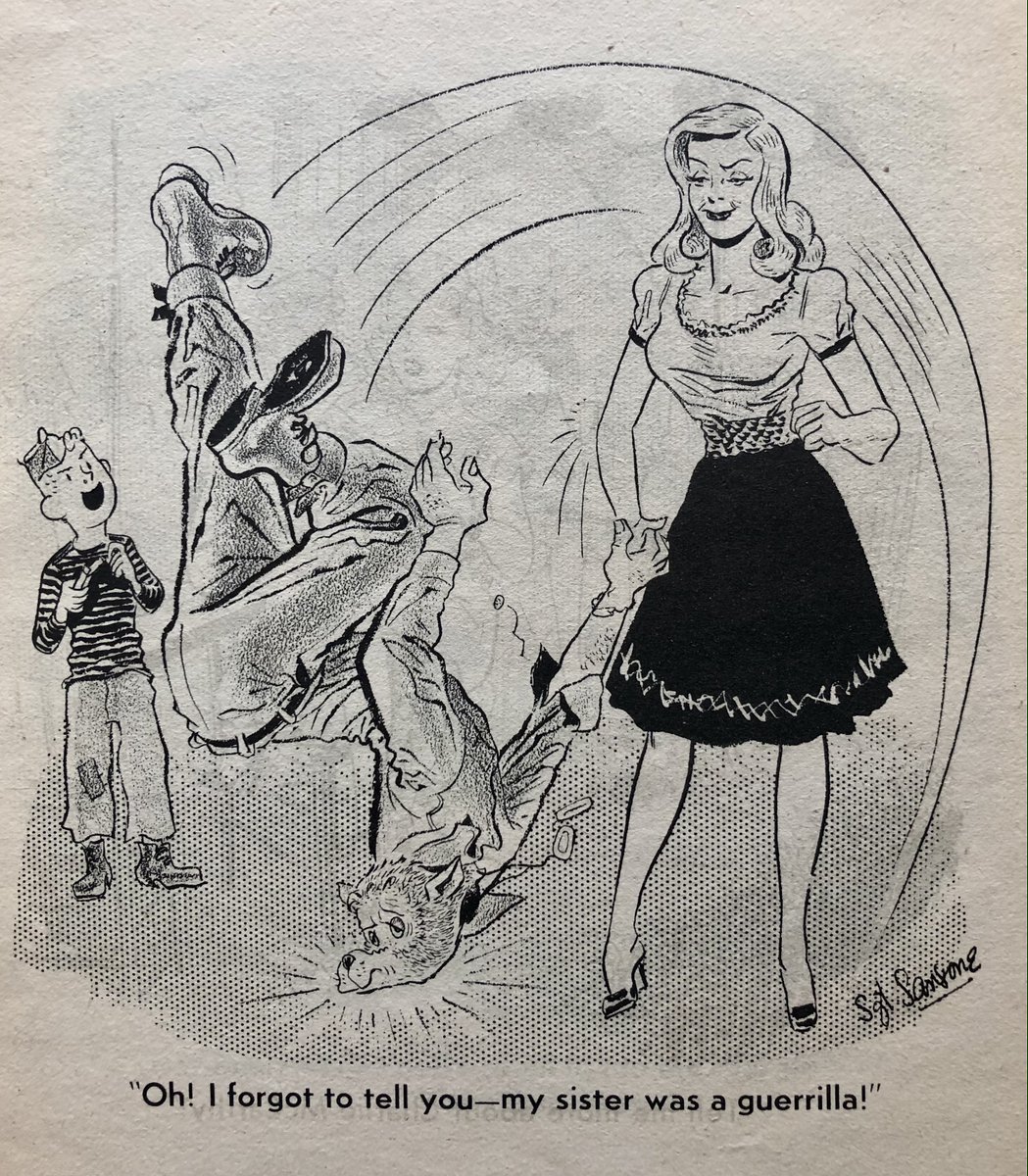/thread/ In my War & Gender course this semester, I was introduced to "The Wolf," a #WWII cartoon by Sgt. Leonard Sansone, playing off the "wolfish Casanova" cliché.
This final cartoon in Sansone& #39;s 1945 book, The Wolf, is frightening, clearly seen in the woman& #39;s face.
This final cartoon in Sansone& #39;s 1945 book, The Wolf, is frightening, clearly seen in the woman& #39;s face.
In Aaron Hiltner& #39;s Taking Leave, Taking Liberties--one of the books we& #39;ve read--we discover WWII soldiers on pass finding appeal in cities like New York or Boston because of the wartime "suspension of civic virtue and raucous celebration of wolfish aggression."
Hiltner argues that "wartime made sorting out the protector from the wolf even more difficult." Far too often, young men suggested: “If a girl says, ‘No,’ pretend that she has said ‘Yes.’”
I found similar attitudes, of both protector & wolf, in Cold War pulp mags. #PulpVietnam
I found similar attitudes, of both protector & wolf, in Cold War pulp mags. #PulpVietnam
One of Hiltner& #39;s core arguments is the military uniform bestowed a sense of privilege on the wearer. "While only a few stormed a beach or flanked along a hedgerow, many exercised the privilege of the uniform while taking leave." Among those were "cornering and chasing women."
We& #39;ve spent a lot of time contesting the "Good War" narrative this semester and rather than conspiring to undermine our "patriotic past," it& #39;s been valuable to revisit how gender was portrayed in pop culture and how those portrayals played out in real life right here at home.
Thought I would share Sansone& #39;s cartoons here because they offer important, if disturbing, insights into how military men and civilian women on the American home front were popularly depicted in WWII. (The Wolf was covered in > 3,000 local post papers after 1942.)

 Read on Twitter
Read on Twitter






